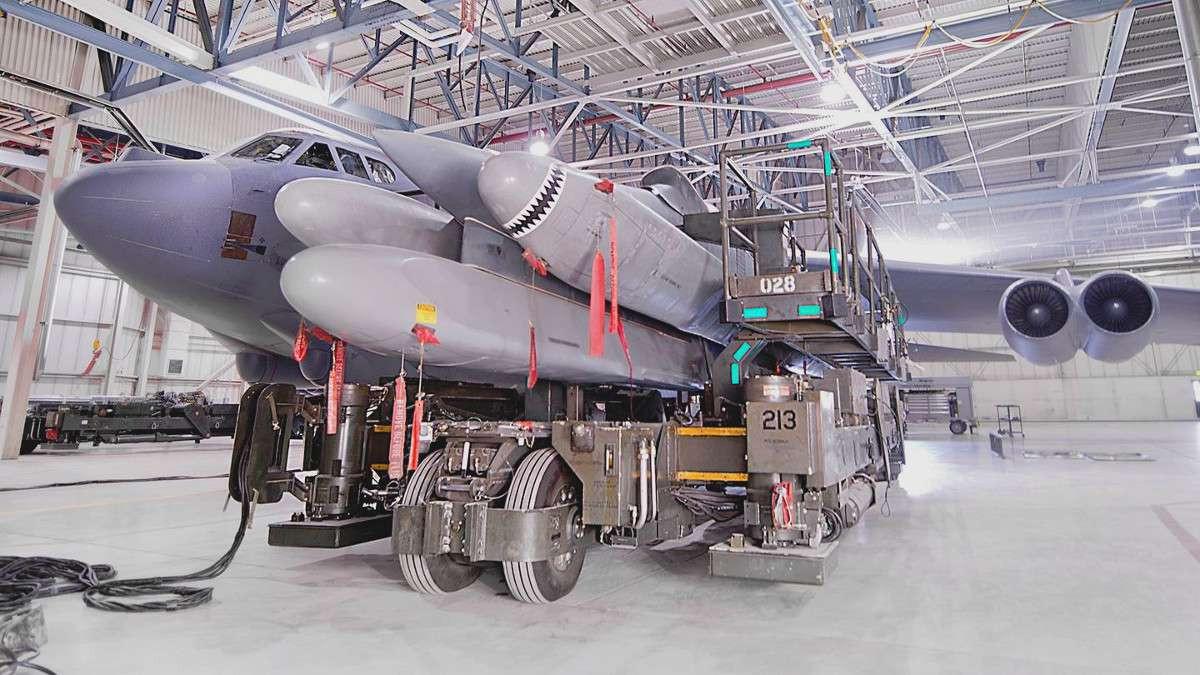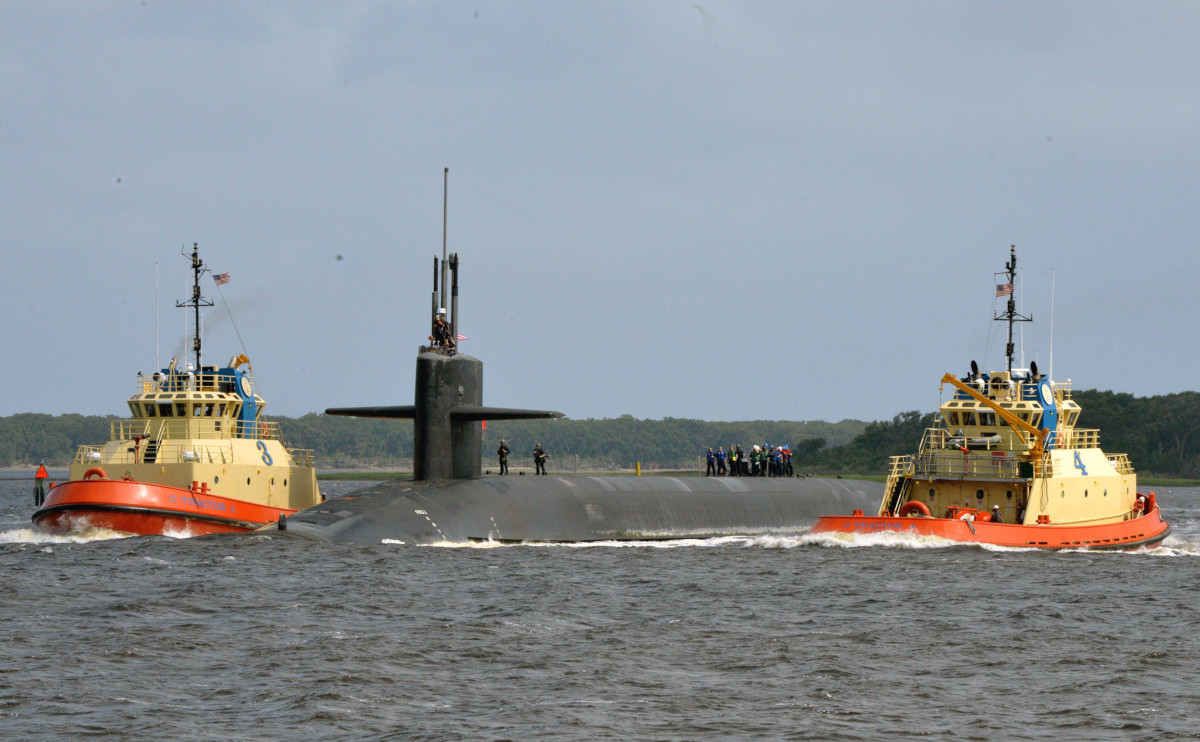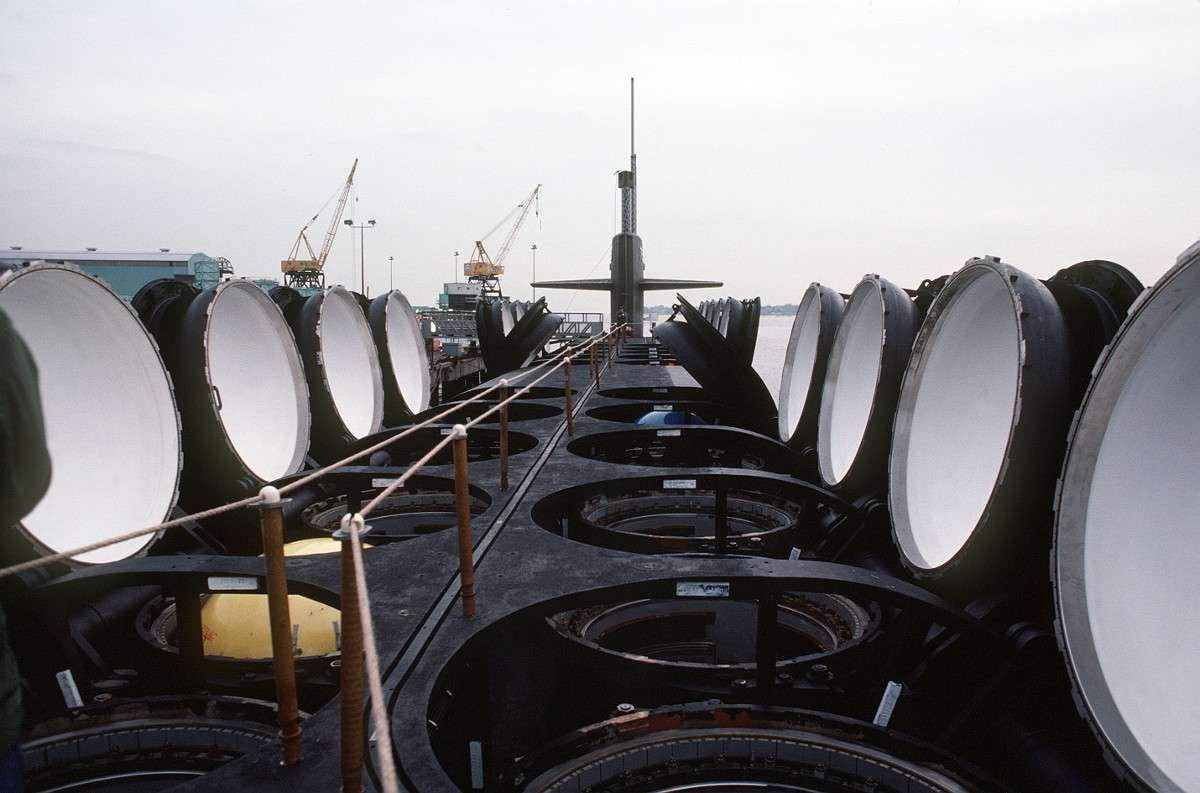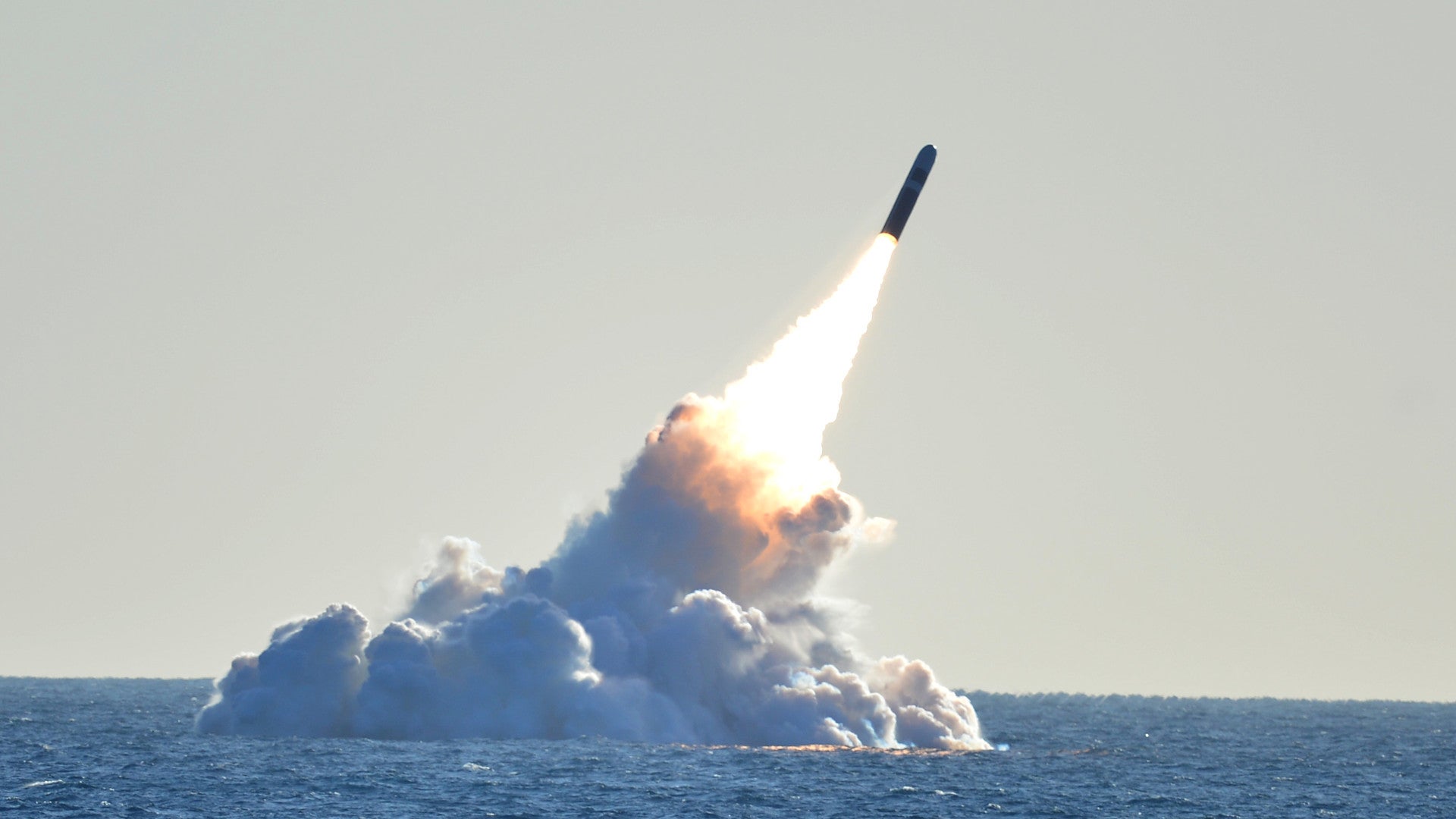In an unusual move, late last year, Russian authorities sent a letter directly to American lawmakers complaining that the United States needs to prove that it is not in violation of a key arms control treaty. The same document includes “clarifications” and other rejections of the U.S. government’s own concerns about Russian developments. But those latter statements strongly suggest that the Kremlin may have initiated development of a number of new nuclear weapons specifically to skirt the agreement’s requirements or perhaps give the country additional leverage in future negotiations.
The Wall Street Journal was the first to obtain a copy of a translation of the unsigned letter regarding the New Strategic Arms Reduction Treaty, or New START, which is dated December 2018. The Russian accusations center primarily around modifications to a number of U.S. Air Force B-52H Stratofortress heavy bombers and U.S. Navy Ohio-class nuclear ballistic missile submarines, or SSBNs. The Kremlin also raises questions about whether silos the Air Force uses to train personnel to work with and launch intercontinental ballistic missiles, or ICBMs, are truly incapable of live missiles.
“Recent years were marked by the rise of the problems that undermine its [New START’s] viability,” the letter’s introduction explains after lauding the agreement. “In the worst case scenario these problems might potentially disrupt prospects for its extension after 2021.”
The United States and Russia signed New START in 2010 and it entered force in 2011. It is set to expire in 2021 unless the two countries agree to extend it through 2026. Any further agreements on strategic nuclear weapons after that point would require a new deal.

At its most basic, New START puts hard limits on the total number of deployed strategic missiles and bombers, total warheads, and deployed and non-deployed launchers. Strategic missiles include ICBMs and submarine-launched ballistic missiles, or SLBMs. Each reentry vehicle inside a single missile and each nuclear-capable heavy bomber count as a single warhead. A single launcher is either a missile silo, individual launch tube on a submarine, or a single bomber.
To meet the treaty’s requirements, the Air Force modified 41 B-52H bombers to make them incapable of delivering nuclear weapons. The Navy similarly sealed off four of the Trident II SLBM launch tubes on each one of its 14 Ohio SSBNs. That service had already converted another four Ohios to entirely conventional guided missile submarines, or SSGNs, armed with Tomahawk land attack cruise missiles.
“Three years ago the U.S. side declared its intention to convert B-52H heavy bombers by rendering them incapable of employing nuclear armaments by removing the nuclear code enabling switch and interconnection box, mounting a code enabling switch inhibitor plate, removing applicable cable connectors, [and] capping applicable wire bundles,” the letter explains. By the end of 2015, the United States had given Russian inspectors a chance to look over the first conventional-only B-52H with these modifications.

Russia contends these measures are insufficient to meet the treaty’s requirements for rendering a “launcher” non-nuclear capable and that it is hard, if not impossible to verify that the remaining 40 bombers have even received these modifications. The concern is that the United States could rapidly reinstall the aforementioned equipment and quickly return the bombers to their nuclear-capable functionality.
The Kremlin cites similar problems with the conversion of the four tubes on the Ohio SSBNs, which involves the removal of certain components and the physical sealing of the launch tube. Russia says it was allowed to inspect those changes on the USS West Virginia.

Lastly, the Russians say that they cannot verify that the four silos the Air Force maintains to train IBCM launch crews and other related personnel are actually incapable of launching real missiles. There is no evidence that these facilities are actually fully-functional or are even connected to a launch complex.
All told, the Russians want the United States to include these silos, launch tubes, bombers in its totals of declared weapons and weapon systems under the treaty. These are actually not new complaints and Russia had specifically brought them up in February 2018, when it announced that it had met its treaty requirements on time and accused the U.S. government of cheating to meet the deadline.
The United States has already countered these accusations by noting that New START does not specifically say that the requisite modifications to render a system non-functional have to be irreversible. In addition, it says that the deal’s provisions for regular inspections give the Kremlin ample opportunity to verify that the modifications remain in place.
There is some debate, though, if the U.S. government’s position meets the agreement’s separate criteria for ensuring that any such modifications are not “ambiguous.” It is important to note that the Russian letter makes it clear that they are interested in finding a way forward and it describes existing offers from the United States to provide more confidence in the conversions as “a step in the right direction.”

These proposals include a cabinet-level written declaration stating the United States does not intend to return the conventional-only B-52Hs to their previous configuration and an offer to allow Russian officials to more closely inspect the steel plate that seals the launch tubes on the Ohios. The Kremlin has said these offers are insufficient by themselves and has asked the United States to provide options for “additional measures” to verify the conversions.
But perhaps more importantly, these ongoing deliberations about how to resolve these disputes is that the letter from the Russians uses them to soften the impact of their own potential violations of the agreement. The United States has expressed three relatively minor concerns to the Russians, according to the letter.
The U.S. government wants assurances that launchers Russia uses to test prototype ICBMs may be capable of supporting operation missiles and to inspect a version of the road-mobile RS-24 Yars ICBM that is capable of launch from a fixed silo. The Kremlin contends that the prototype launchers are within the parameters of the treaty and that the silo variant of the RS-24 is not materially different from that of the road-mobile version. There is no mention of long-standing U.S. accusations that Yars is simply an existing missile, the RT-2PM2 Topol-M, modified in a way that violates other New START provisions, to begin with.
There is also the matter of whether the upgraded Tu-22M3M Backfire bomber might qualify as a strategic bomber under the terms of the treaty. Russia says it has no plans to add an inflight refueling capability or integrate new air-launched weapons with extended range that would give a strategic capability as outlined in the agreement.

By far the bigger issue is that Russia is arguing that it should be able to categorically exempt many of its new strategic systems from the terms of the treaty entirely. “The issue of new kinds of Russian armaments that cause concerns of the U.S. to a far lesser extent relates to the treaty than the issue of accountability of ‘converted’ B-52H heavy bombers and Trident II SLBM launchers,” the letter declares.
The Kremlin’s letter explicitly makes it clear that the country does not see the treaty as applicable to the Avangard hypersonic boost-glide vehicle, the Burevestnik nuclear-powered cruise missile, or the Poseidon nuclear-powered unmanned undersea vehicle, seen in the video below. This position is based on the fact that the treaty only covers ICBMs, SLBMs, and heavy bombers.

This argument would seem to be technically accurate, at least in the case of the Burevestnik and Poseidon. The intention to exempt Avangard appears to be based entirely around its non-ballistic flight trajectory, which means it is not specifically a “ballistic” missile, even though it uses repurposed IBCM rocket boosters and gets launched from a silo.
But while Russia appears to have a solid case for why these weapons do not meet the specific definitions of any of the weapon systems New START covers, it does raise the question of whether it developed them in order to skirt the agreement’s requirements. Regardless, having these systems outside of the treaty could give the Kremlin additional leverage, or just things to bargain away, during any future negotiations over extending New START or with regards to a new deal altogether.
The Russians could conceivably offer to limit or cut any one of these weapons in exchange for additional concessions from the United States. There are already questions about whether some of these new developments, especially the Burevestnik cruise missile, seen in the video below, could ever be practical, leaving open the possibility that they exist only to get negotiated away at a later date.

In the past, the U.S. government itself had suggested it might pursue similar tactics to try and goad the Kremlin back into compliance with the Intermediate-Range Nuclear Forces Treaty, or INF, which covers an entirely different set of nuclear and non-nuclear weapons. The United States has now announced its intention to abandon that deal, though the U.S. and Russian governments continue to engage with each other over that agreement with a possible eye toward saving or renegotiating it. You can read more about that ongoing debate in detail here.
Of course, there’s also no guarantee that New START will survive past 2021, which would render all of these issues moot. Russia’s letter to American legislators makes it clear that the Kremlin is interested in continuing to abide by the agreement, but only insofar as the United States is willing to meet its demands.
Russia has an established history of deflecting from its own violations of international treaties and norms while criticizing its opponents for similar malfeasance, as has been the case with the INF. At the same time, President Donald Trump’s administration and some American legislators are themselves openly questioning a wide array of international agreements, including New START. The more deals that collapse for one reason or another, the more it erodes confidence in the ones that remain.
2021 is not very far away at all and the U.S. and Russia will have to begin resolving these compliance issues and other disputes in short order if they truly intend to agree on an extension or reach a new deal before New START expires.
Contact the author: jtrevithickpr@gmail.com
